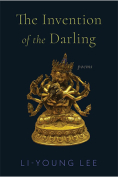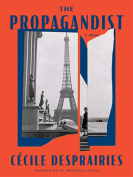Wheel by Hayden Saunier
 West Caldwell, New Jersey. Terrapin Books. 2024. 94 pages.
West Caldwell, New Jersey. Terrapin Books. 2024. 94 pages.
How wonderful to discover a collection of poems based on my native habitat! I feel I’ve walked Hayden Saunier’s paths, seen the same chicory and Queen Anne’s lace, and watched the same rye fields she’s seen harvested—Saunier’s poetry describes life on her Bucks County farm in southeastern Pennsylvania. An agrarian poet, in the main, Saunier’s subthemes cover dressing for wintry weather, honoring compost, the night sky, the worker bees, visiting Fonthill Castle. She also offers fine reflections on “becoming” as we pass through nature’s repeating design of life, death, and growth.
Saunier’s art is crafted with subtle midline rhymes and assonance, and with thoughtful diction. She delivers her stanzas in free verse, many with innovative approaches. (In one such, she uses a grammar chart.) Instances of alliteration occur in “I Go for a Walk While My Cat Eats a Mouse,” as follows:
So I pull on my black rubber boots,
walk out through wet grasses, grateful for rain
which has finally come in the night. Huge storms
that have killed some, revived some, cracked open
the lives of some others. Late June. Wild cherries
dangle rain-shiny from roughbarked old trees.
Roses petal-less, thorny canes bent. Ditches
rushing with runoff, a suddenly wide creek [. . .]
this morning sun warming wide empty planks
of pine floor and a bowl of shelled peas by the door.
In “Warm Night with Storm and Moon” details of the poem draw us into a downpour. Saunier creates an ocean out of the flooded fields and presents the narration as a prose poem. “So many boats out there,” she writes. “A small farm is a good life if you could make a living.” After the storm, “Moonlight is shining all over us . . . is silvering our fence line, the barn’s tin roof, the ribbon of unlined road curving away, the same road we take whether coming or going.”
From another poem, we learn raspberry canes may have come from Troy. Describing the tightening of a trellis, the poet writes:
Rubus idaeus. The story says a rose bush
on Mount Ida taught itself to transform blossoms
into sugared bodies made from sun, earth,
rain, build cups of sweetness
out of aggregated drupelets, offer
sustenance to every passerby—a trait not widespread
among humans. Or so the story goes.
A striking and rewarding aspect of Wheel occurs when we encounter Saunier’s four “Wheel” poems. They appear at beginning and end as well as interspersed within the volume. It is these poems that bring delightful cohesion to the collection. Discovering them one by one lets us feel, along with the author, the repetitiveness of nature.
Not only are lines repeated within the wheel poems, but iterations also occur from wheel poem to wheel poem. This is fascinating and turns the collection itself into a “cycling through.” We recognize lines from a previous wheel poem; thus, we feel we’ve experienced the movement of time—as if we, too, have passed through a season and given a nod to the beauty along the path.
The tractor with its brush hog attachment (a cutting instrument) in “Wheel (2),” is to Saunier the destructive god Shiva:
soft roaring of horsepower, headphone
cords snaking our shoulders, the music
of spheres in our ears with the whir
of sharp blades in hovering circles below.
We turn and we turn and we cut
and we cut, making way for green shoots
When I want to recall the fertile fields and lanes of Bucks County, I’ll pick up Saunier’s Wheel and reread it with enjoyable recollection and awareness of how life and the seasons are ever turning.
Carole Mertz
Parma, Ohio






























